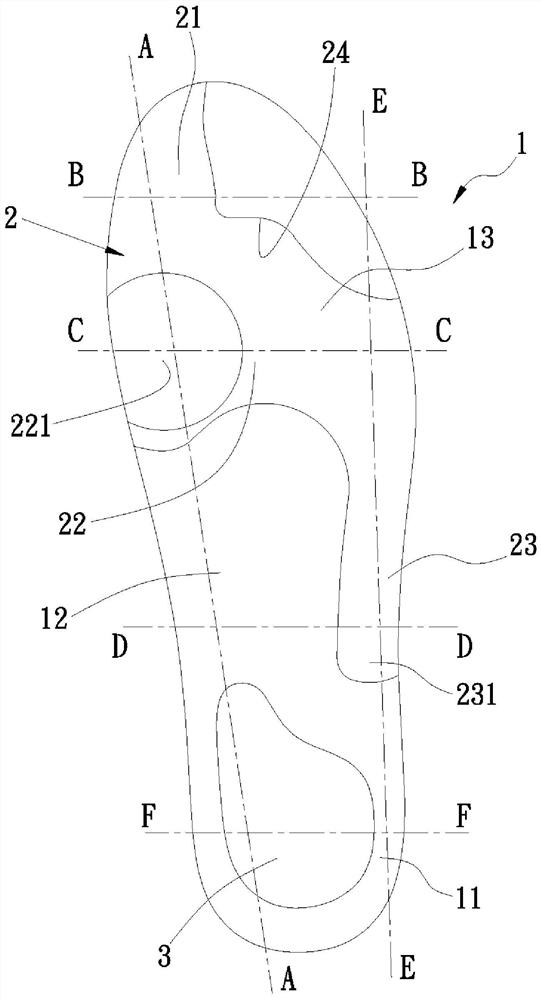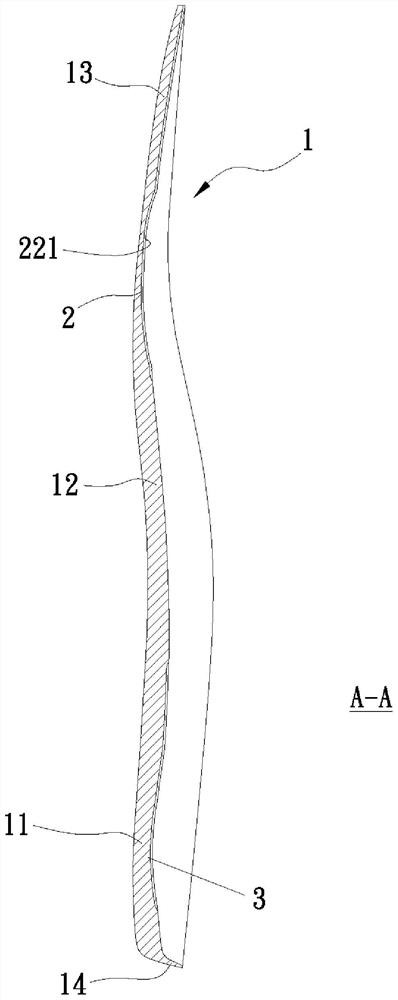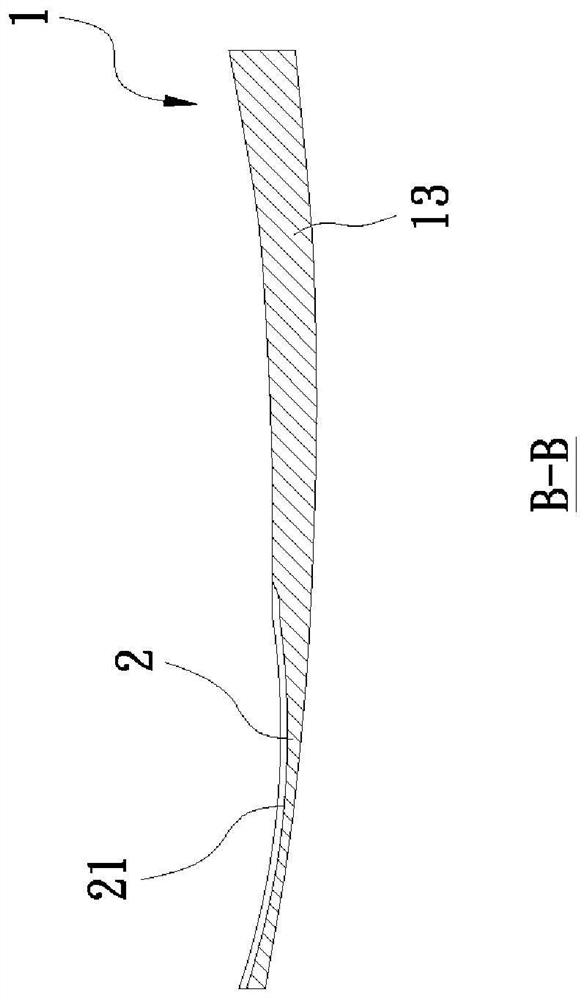Decompression insole structure
A technology of insoles and thin pads, which is applied in the field of decompression insole structures, which can solve the problems of hindering the soles of the feet from sinking, up and down misalignment, and increased chances of sprains, etc., and achieve the effects of easy and smooth movement, decompression of movement, and strong stability
- Summary
- Abstract
- Description
- Claims
- Application Information
AI Technical Summary
Problems solved by technology
Method used
Image
Examples
Embodiment Construction
[0050] In order to have a clearer understanding of the technical solutions, purposes and effects of the present invention, the specific embodiments of the present invention will now be described with reference to the accompanying drawings.
[0051] First, see figure 1 Shown, is the three-dimensional appearance schematic diagram of the pressure relief insole structure of the present invention, including:
[0052] An insole body 1. The insole body 1 includes a heel area 11, an arch area 12, and a forefoot area 13 that gradually become thinner from thicker to thinner. The forefoot region 13 and the arch region 12 are provided with a guiding thin pad portion 2 and the heel region 11 is provided with a rear stabilizing thin pad portion 3, wherein:
[0053] The guiding thin pad 2 includes a thumb segment 21 corresponding to the first phalangeal bone a1 of the human foot, a thumb segment 21 connected to the thumb segment 21 and corresponding to the first metatarsophalangeal joint b1,...
PUM
 Login to View More
Login to View More Abstract
Description
Claims
Application Information
 Login to View More
Login to View More - R&D
- Intellectual Property
- Life Sciences
- Materials
- Tech Scout
- Unparalleled Data Quality
- Higher Quality Content
- 60% Fewer Hallucinations
Browse by: Latest US Patents, China's latest patents, Technical Efficacy Thesaurus, Application Domain, Technology Topic, Popular Technical Reports.
© 2025 PatSnap. All rights reserved.Legal|Privacy policy|Modern Slavery Act Transparency Statement|Sitemap|About US| Contact US: help@patsnap.com



